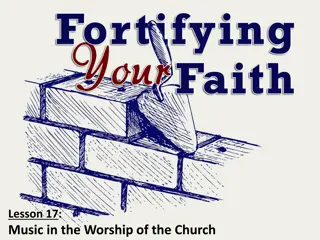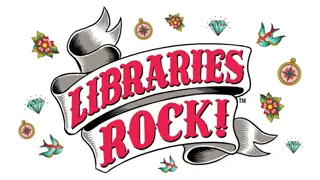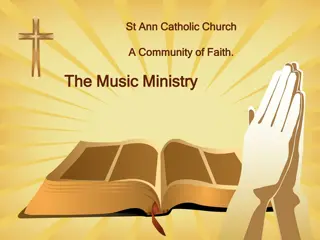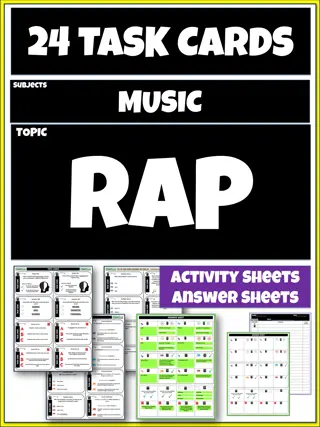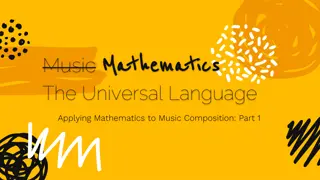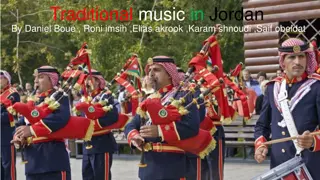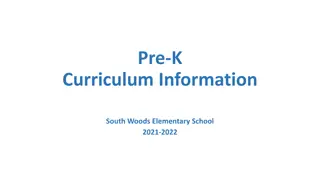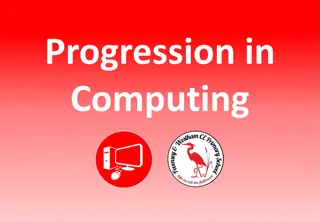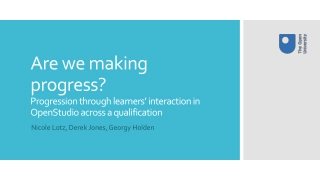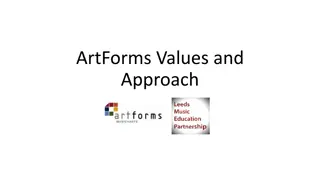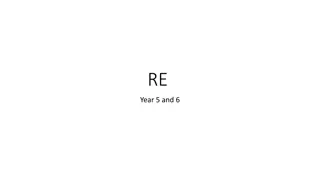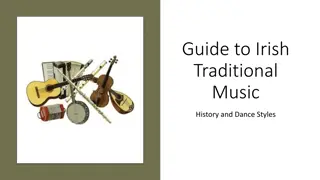Music Progression of Learning at Hailey CE Primary School - National Curriculum Overview
The music progression of learning at Hailey CE Primary School includes key objectives for Key Stage 1 and Key Stage 2 pupils. Students are taught to use their voices expressively, play instruments, listen to various music types, experiment with sound, play and perform in solo or ensemble settings, improvise and compose music, understand musical notations, and appreciate a wide range of music styles. The curriculum aims to develop students' musical skills, understanding, and appreciation, encompassing listening, performing, and composing activities.
Download Presentation

Please find below an Image/Link to download the presentation.
The content on the website is provided AS IS for your information and personal use only. It may not be sold, licensed, or shared on other websites without obtaining consent from the author. Download presentation by click this link. If you encounter any issues during the download, it is possible that the publisher has removed the file from their server.
E N D
Presentation Transcript
Music Progression of Learning at Hailey CE Primary School National Curriculum Overview Key Stage 1 Key Stage 2 Pupils will be taught to: Use their voices expressively and creatively by singing songs and speaking chants and rhymes Play tuned and untuned instruments musically Listen with concentration and understanding to a range of high-quality live and recorded music Experiment with, create, select and combine sounds using the inter-related dimensions of music Pupils will be taught to: Play and perform in solo and ensemble contexts, using their voices and playing musical instruments with increasing accuracy, fluency, control and expression Improvise and compose music for a range of purposes using the inter-related dimensions of music Listen with attention to detail and recall sounds with increasing aural memory Use and understand staff and other musical notations Appreciate and understand a wide range of high-quality live and recorded music drawn from different traditions and from great composers and musicians Develop an understanding of the history of music
Listening and Appraising Pegasus Unicorn Phoenix Griffin We will: 3 and 4 Year Olds: Respond to what we have heard, expressing our thoughts and feelings We will: Know five songs off by heart Know some songs have a chorus or a response/answer part Know songs have a musical style Know how songs can tell a story or describe an idea Recognise the sound and names of some of the instruments they use Enjoy moving to music by dancing, marching, being animals or pop stars We will: Know five songs from memory and who sang them or wrote them and the style of the five songs Choose one song and be able to talk about: some of the style indicators of that song (musical characteristics that give the song its style); the lyrics and what the song is about ; any musical dimensions featured in the song and where they are used (texture, dynamics, tempo, rhythm and pitch); the main sections of the song (introduction, verse, chorus etc.); some of the instruments they heard in the song Confidently identify and move to the pulse Talk about the musical dimensions working together in songs e.g. if the song gets louder in the chorus (dynamics) Talk about the music and how it makes us feel Listen carefully and respectfully to other people s thoughts about the music Use musical words We will: Know five songs from memory, who sang or wrote them, when they were written and why? Identify the style of the songs and name other songs in those styles Choose three or four other songs and be able to talk about: the style indicators of the songs (musical characteristics that give the songs their style); the lyrics and what the songs are about; any musical dimensions featured in the songs and where they are used (texture, dynamics, tempo, rhythm, pitch and timbre); the structure of the songs (intro, verse, chorus etc.); some of the instruments used in the songs; the historical context of the songs and what else was going on at this time, musically and historically Know and talk about the fact that we each have a musical identity Identify and move to the pulse with ease Think about the message of songs Compare two songs in the same style, talking about what stands out musically in each of them, their similarities and differences Listen carefully and respectfully to other people s thoughts about the music Use musical words when talking about the songs Talk about the musical dimensions working together in the Unit songs Talk about the music and how it makes us feel, using musical language to describe the music Reception: Listen attentively, move to and talk about music expressing our feelings and responses
Playing Instruments Pegasus Unicorn Phoenix Griffin We will: 3 and 4 Year Olds: Play instruments with increasing control to express our feelings and ideas We will: Know the names of the notes in our instrumental part from memory or when written down Know the names of untuned percussion instruments played in class Treat instruments carefully and with respect Play a tuned instrumental part with the song we perform Learn to play an instrumental part that matches our musical challenge, using one of the differentiated parts (a one-note part, a simple part, medium part) Play the part in time with the steady pulse Listen to and follow musical instructions from a leader Know that music has a steady pulse, like a heartbeat Know that we can create rhythms from words, our names, favourite food, colours and animals Know the names of the instruments I am playing We will: Talk about the instruments used in class (a glockenspiel, clarinet or xylophone) and other instruments we might play or be played in a band or orchestra or by our friends Treat instruments carefully and with respect Play any one, or all four, differentiated parts on a tuned instrument a one-note, simple or medium part or the melody of the song from memory or using notation Rehearse and perform our parts within the context of the song Listen to and follow musical instructions from a leader Experience leading the playing by making sure everyone plays in the playing section of the song We will: Know about the different ways of writing music down e.g. staff notation, symbols Learn about the notes C, D, E, F, G, A, B + C on the treble stave Talk about the instruments they might play or be played in a band or orchestra or by their friends Play a musical instrument with the correct technique within the context of the song Select and learn an instrumental part that matches our musical challenge, using one of the differentiated parts a one-note, simple or medium part or the melody of the song from memory or using notation Rehearse and perform our parts within the context of the song Listen to and follow musical instructions from a leader Lead a rehearsal session
Improvisation Pegasus Unicorn Phoenix Griffin We will: 3 and 4 Year Olds: Create our own songs, or improvise a song around one we know Play instruments with increasing control to express our feelings and ideas We will: Know that improvisation is making up your own tunes on the spot Know when someone improvises, they make up their own tune that has never been heard before Know everyone can improvise, and you can use one or two notes Clap and Improvise Listen and clap back, then listen and clap our own answer (rhythms of words) Sing, Play and Improvise Use voices and instruments, listen and sing back, then listen and play our own answer using one or two notes. Improvise Take it in turns to improvise using one or two notes We will: Know that improvisation is making up your own tunes on the spot Know when someone improvises, they make up their own tune that has never been heard before Know that using one or two notes confidently is better than using five Know if you improvise using the notes you are given, you cannot make a mistake Sing, Play and Copy Back Listen and copy back using instruments, two different notes Play and Improvise Using our instruments, listen and play Take it in turns to improvise using three different notes We will: Know that improvisation is making up your own tunes on the spot Know when someone improvises, they make up their own tune that has never been heard before Know that using one, two or three notes confidently is better than using five Know if you improvise using the notes you are given, you cannot make a mistake Know three well-known improvising musicians Play and Copy Back - Copy back using instruments, use the three notes Play and Improvise - using up to three notes Improvise questions and answers using instruments Improvise - using up to three notes ELG Perform songs, rhymes, poems and stories with others, and (when appropriate) try to move in time with music
Composition Pegasus Unicorn Phoenix Griffin We will: 3 and 4 Year Olds: Create our own songs, or improvise a song around one we know Play instruments with increasing control to express our feelings and ideas We will: Know that composing is like writing a story with music Everyone can compose Help to create a simple melody using one, two or three notes Learn how the notes of the composition can be written down and changed if necessary We will: Know that a composition is music that is created by us and kept in some way. It s like writing a story. It can be played or performed again to our friends Find different ways of recording compositions (letter names, symbols, audio etc.) Help create at least one simple melody using one, three or all five different notes Plan and create a section of music that can be performed within the context of a song Talk about how it was created Listen to and reflect upon the developing composition and make musical decisions about pulse, rhythm, pitch, dynamics and tempo Record the composition in any way appropriate that recognises the connection between sound and symbol (e.g. graphic/pictorial notation) We will: Know that a composition is music that is created by us and kept in some way. It s like writing a story. It can be played or performed again to our friends Know that a composition has pulse, rhythm and pitch that work together and are shaped by tempo, dynamics, texture and structure Understand notation and recognise the connection between sound and symbol Create simple melodies using up to five different notes and simple rhythms that work musically with the style of a song Explain the keynote or home note and the structure of the melody Listen to and reflect upon the developing composition and make musical decisions about how the melody connects with the song Record the composition in any way appropriate that recognises the connection between sound and symbol (e.g. graphic/pictorial notation) ELG Perform songs, rhymes, poems and stories with others, and (when appropriate) try to move in time with music
Performance Pegasus Unicorn Phoenix Griffin We will: Reception: Sing in a group or on our own, increasingly matching the pitch and following the melody ELG Sing a range of well-known nursery rhymes and songs Perform songs, rhymes, poems and stories with others, and (when appropriate) try to move in time with music We will: Know that a performance is sharing music with other people, called an audience Know that a performance can be a special occasion and involve a class, a year group or a whole school and an audience can include our parents and friends Choose a song we have learnt and perform it Add our ideas to the performance Record the performance and say how we were feeling about it We will: Know that performing is sharing music with other people, an audience Know that a performance doesn t have to be a drama! It can be to one person or to each other Have planned everything that will be performed Sing or rap the words clearly and play with confidence Know that a performance can be a special occasion and involve an audience including people we don t know Understand that it is planned and different for each occasion Understand that it involves communicating feelings, thoughts and ideas about the song/music Choose what to perform and create a programme Present a musical performance designed to capture the audience Communicate the meaning of the words and clearly articulate them Talk about the best place to be when performing and how to stand or sit Record the performance and say how we were feeling, what we were pleased with what we would change and why We will: Know that performing is sharing music with an audience with belief Know that a performance doesn t have to be a drama! It can be to one person or to each other Have everything that will be performed planned and learned Understand that we must sing or rap the words clearly and play with confidence Know that a performance can be a special occasion and involve an audience including people we don t know Understand that it is planned and different for each occasion Understand that a performance involves communicating ideas, thoughts and feelings about the song/music Choose what to perform and create a programme. Communicate the meaning of the words and clearly articulate them Talk about the venue and how to use it to best effect Record the performance and compare it to a previous performance Discuss and talk musically about it What went well? and It would have been even better if...?
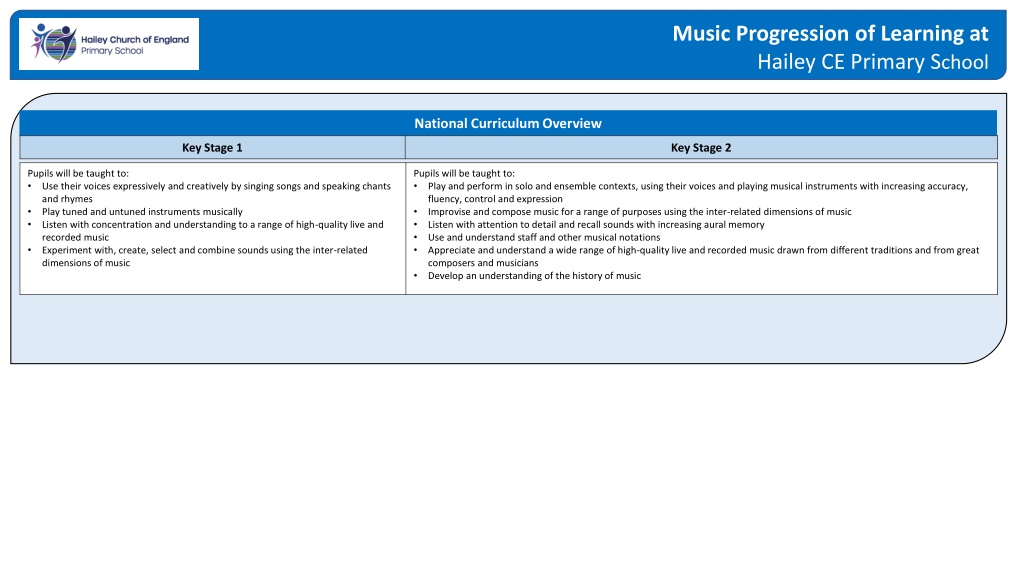


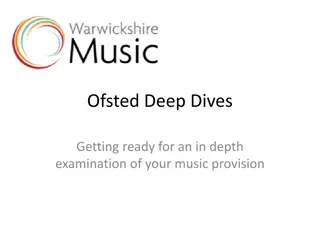
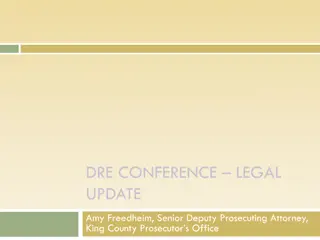
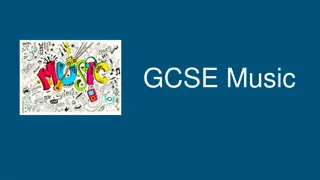
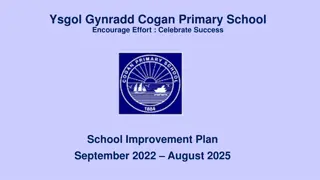
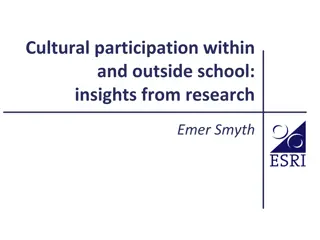
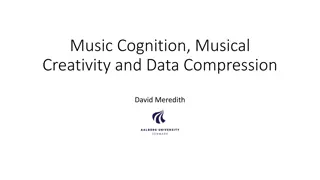
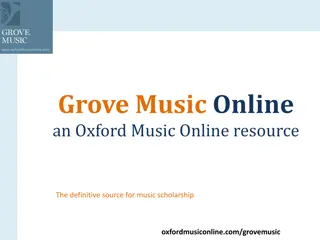
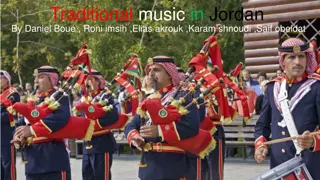
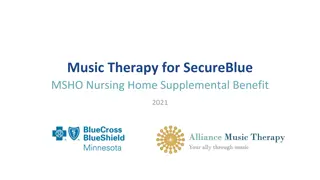
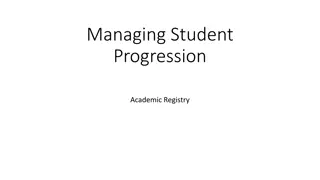

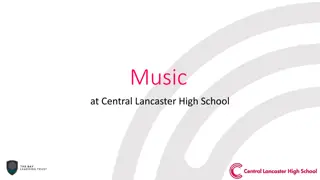
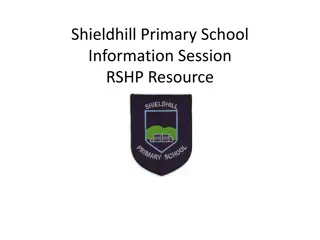
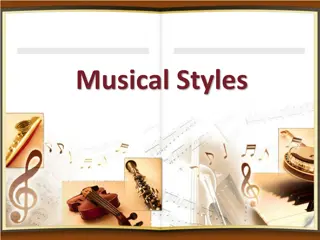
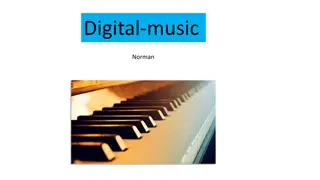

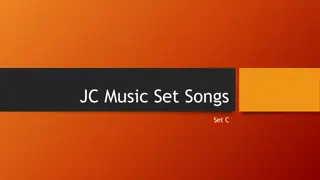
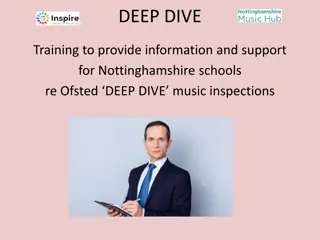
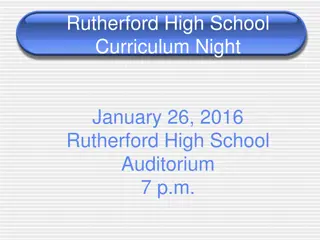
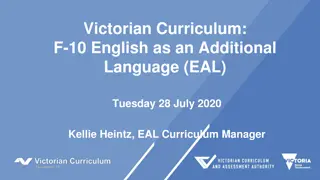
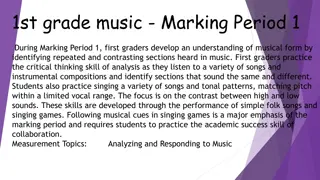
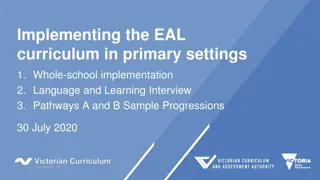
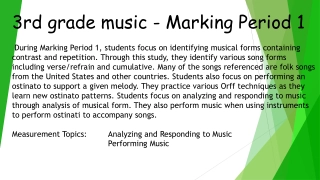
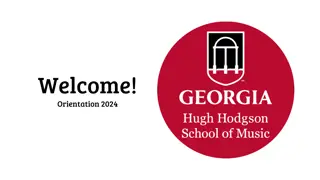
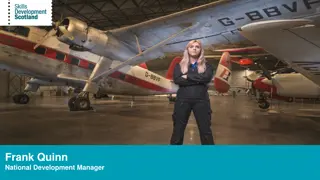

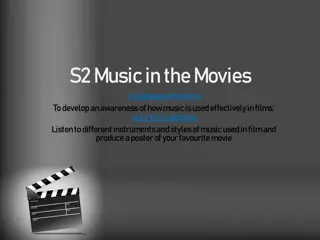
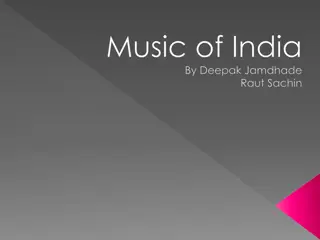
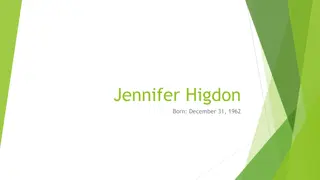
![Explore the Exciting World of Live Music Through [Insert Town/City] Census!](/thumb/148894/explore-the-exciting-world-of-live-music-through-insert-town-city-census.jpg)
